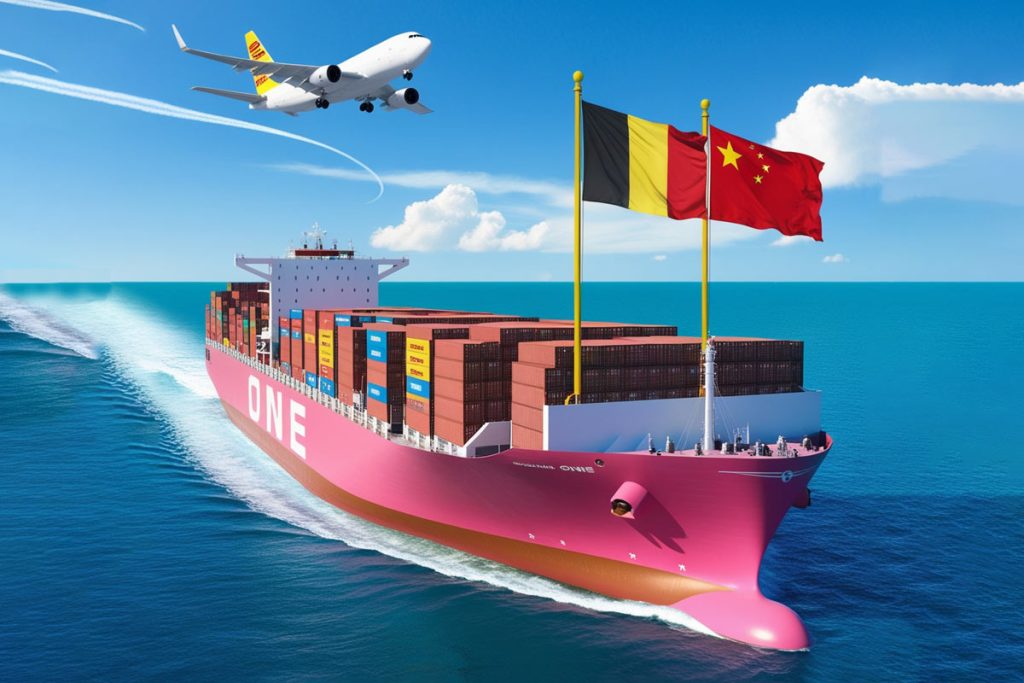Shipping from China to Belgium can feel like a puzzle.
You’re juggling timelines, costs, and customs paperwork while trying to avoid delays and extra fees.
Sound familiar?
Don’t worry—you’re not alone.
This guide will walk you through everything, from choosing the best shipping method to navigating customs and avoiding common pitfalls.
By the end, you’ll know exactly how to ship like a pro.

China is the factory of the world.
Electronics, clothing, machinery—whatever you need, chances are, it’s made there.
Belgium, on the other hand, is Europe’s gateway.
Its ports, rail links, and proximity to major EU markets make it a top spot for importing goods.
For businesses, this route is a no-brainer.
Whether you’re an eCommerce seller or managing a supply chain, shipping from China to Belgium is where the magic happens.
When it comes to moving goods from China to Belgium, you’ve got four main options:
Each one has its pros, cons, and ideal use cases.
Let’s break it down.
Sea freight is the budget-friendly option for large shipments.
Why choose sea freight?
The downside?
It’s slow. Think 30–45 days from departure to arrival.
When does sea freight make sense?
Pro Tip: If you don’t have enough goods to fill a container, go for LCL (less-than-container load) shipping. You’ll share space with other shipments, saving money.
Need speed? Air freight is the way to go.
Why choose air freight?
The downside?
It’s expensive. You’re paying for speed.
When does air freight make sense?
Pro Tip: Air freight costs are based on weight and volume. For lightweight but bulky items, you’ll pay for the space they take up.
Express services like DHL, FedEx, and UPS are the rockstars of shipping.
Why choose express shipping?
The downside?
It’s pricey, especially for heavier shipments.
When does express shipping make sense?
Pro Tip: If you’re shipping internationally as an eCommerce seller, express services are great for keeping customers happy with fast delivery.
Rail freight is the middle ground between sea and air.
Why choose rail freight?
The downside?
Limited coverage. Not every type of cargo can go by rail.
When does rail freight make sense?
Pro Tip: Rail is also more eco-friendly than air or sea freight. If sustainability matters to your business, this is a solid option.
Shipping costs vary based on:
Here’s a rough breakdown of shipping costs:
Pro Tip: Always get quotes from multiple carriers to compare costs. And don’t forget to factor in hidden fees like customs duties, port charges, and fuel surcharges.
Delivery times depend on your shipping method:
Planning ahead is everything.
If you’re shipping for the holidays or a product launch, don’t risk delays. Choose air or express for faster delivery.
Customs can feel like the most complicated part of shipping.
But if you’re prepared, it’s no big deal.
Here’s what you need:
Pro Tip: If you’re shipping regularly, working with a freight forwarder who handles customs is a game-changer.
Let’s face it: shipping isn’t always smooth.
Here are the biggest challenges—and how to sidestep them:
Want to keep costs low?
Here are my best tips:
Here’s a quick recap:
Your choice depends on your budget, cargo size, and how quickly you need the goods.
Shipping from China to Belgium doesn’t have to be stressful.
By picking the right method, staying organized with customs, and planning ahead, you can make the process simple and cost-effective.
Ready to ship?
Now you’ve got everything you need to make it happen.